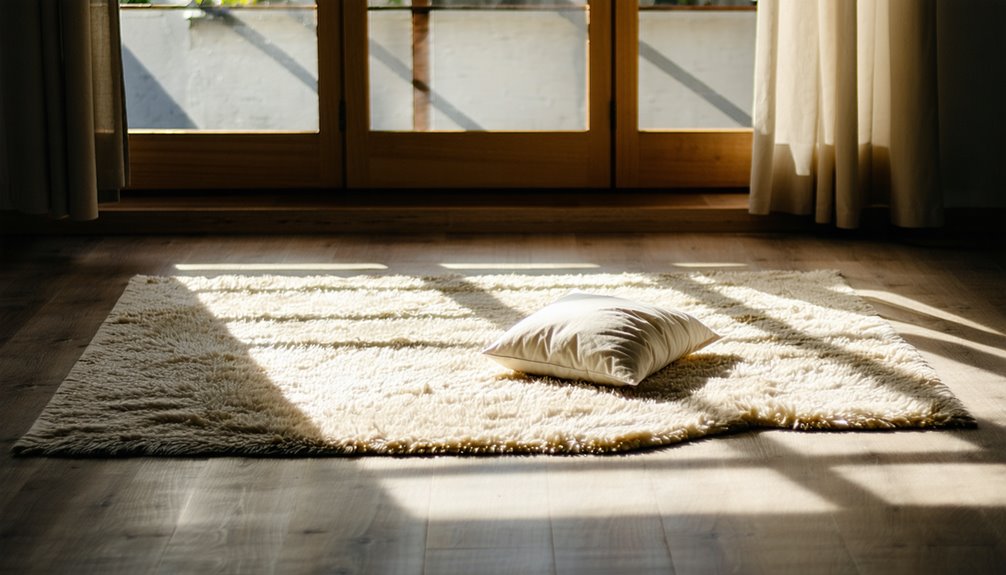Sleeping on the floor can be good for your back as it offers a firm surface that promotes proper spinal alignment. This reduced pressure on your body can enhance muscle relaxation and circulation, possibly alleviating chronic back pain. However, it's essential to recognize that not everyone will benefit; some may experience discomfort or stiffness, especially in colder environments. Shifting gradually, starting with a thin pad, can help your body adjust. If you're curious about whether this approach is right for you, there are further insights on its advantages and potential challenges.
Understanding Floor Sleeping
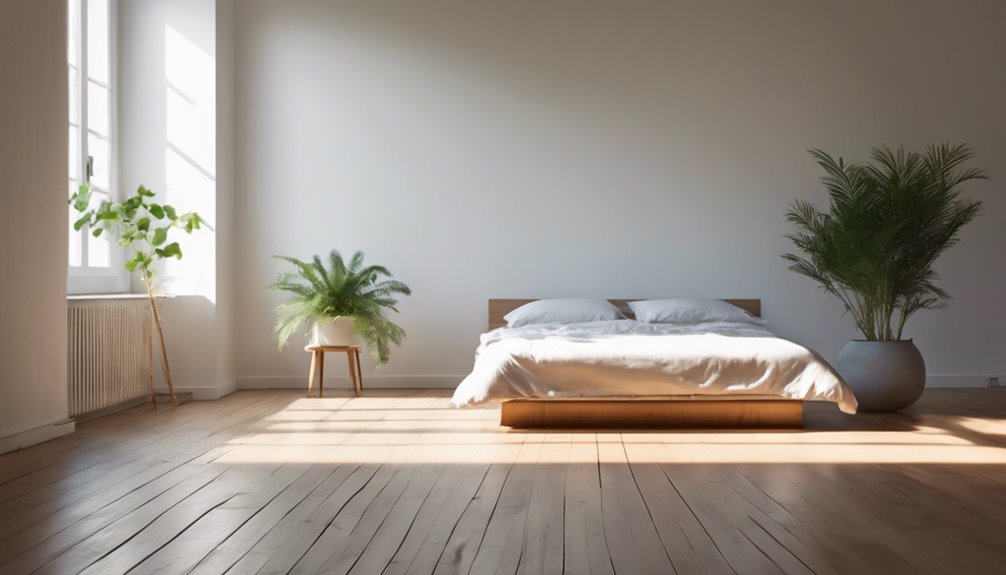
Understanding 床 sleeping involves recognizing the potential benefits and drawbacks of this practice for your back health. While some people report enhanced sleep quality and improved posture, others may struggle with floor comfort, leading to discomfort and disrupted rest. The hard surface can provide a more natural sleeping position, which might align your spine effectively. However, if you're not accustomed to it, the initial discomfort could outweigh the advantages. It's essential to assess your body's needs and perhaps start gradually, using a thin mattress or padding to ease the shift. Ultimately, exploring floor sleeping can be a liberating experience, but you should carefully consider how your own body responds to this change in your sleep environment.
Benefits for Back Health
Sleeping on the floor can lead to improved spinal alignment, as the firm surface encourages your spine to maintain a neutral position. You might also experience enhanced muscle relaxation, as a harder surface can help reduce tension in your muscles overnight. Additionally, floor sleeping can decrease pressure points, promoting better circulation and overall comfort while you rest.
Improved Spinal Alignment
Floor sleeping can offer significant benefits for spinal alignment, an essential factor for maintaining ideal back health. When you sleep on a firm surface, your spine can achieve better spinal decompression, helping to reduce pressure on vertebral discs. This position encourages natural curvature and promotes posture improvement, which is fundamental for alleviating chronic back pain. You'll likely notice that your body adjusts, leading to enhanced alignment over time. Additionally, a flat surface minimizes the risk of sinking into soft materials that can distort your posture during sleep. By prioritizing spinal alignment, you can foster a more robust back health routine while enjoying the freedom of movement that comes from a well-aligned spine.
Enhanced Muscle Relaxation
A firm surface not only supports better spinal alignment but also promotes enhanced muscle relaxation. When you sleep on the floor, it encourages your body to adopt a more natural position, which can help alleviate muscle tension. This is particularly beneficial if you often experience tightness in your back and shoulders. Incorporating relaxation techniques, such as deep breathing or gentle stretching before bed, can further enhance this effect. By reducing muscle tension, you're likely to wake up feeling more refreshed and free from discomfort. Many find that this simple shift in sleeping habits leads to a deeper, more restorative sleep, ultimately contributing to overall back health. Embracing this change might just be the key to your well-being.
Reduced Pressure Points
When considering the impact of your sleeping surface on back health, reduced pressure points can play an essential role. Sleeping on the floor often provides a firmer base, allowing your body to distribute weight evenly. This leads to significant pressure relief, particularly in areas prone to discomfort, such as the lower back and hips. By minimizing these pressure points, you may experience pain reduction, enhancing your overall sleep quality. Additionally, a firm surface can encourage proper spinal alignment, further contributing to back health. While individual preferences vary, many find that the simplicity of floor sleeping supports their body's needs, fostering a sense of freedom and well-being. Ultimately, prioritizing reduced pressure points can make a meaningful difference in your back health.
Potential Drawbacks
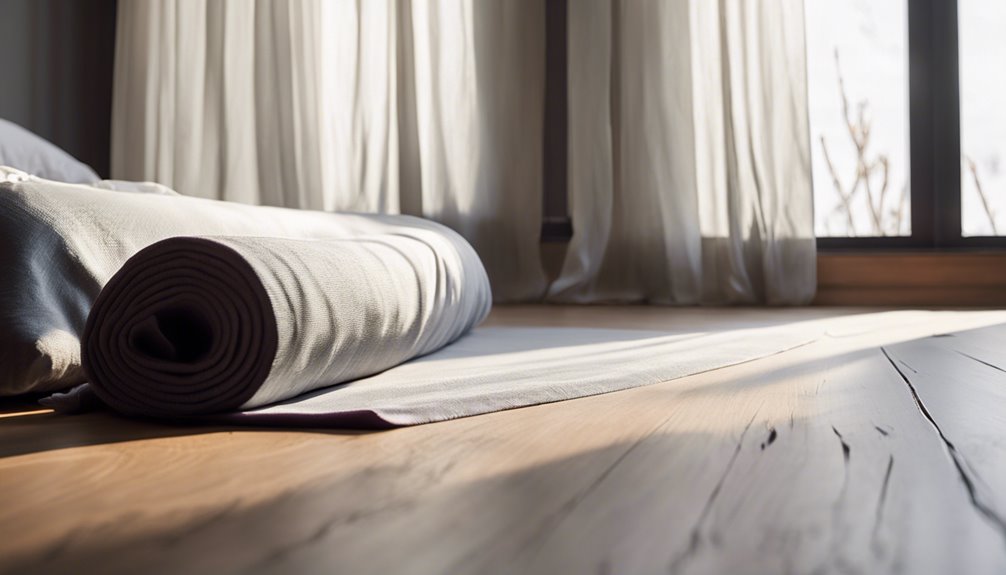
While sleeping on the floor may offer certain benefits for back support, it also has potential drawbacks that shouldn't be overlooked. Some individuals experience discomfort issues due to the hardness of the surface, which can lead to poor sleep quality. Additionally, making this lifestyle adjustment may not be feasible for everyone, particularly those with certain health conditions or mobility concerns.
| Drawback | 説明 |
|---|---|
| Discomfort | Hard surfaces can cause pain and stiffness. |
| Temperature Sensitivity | Cold floors may lead to discomfort in colder climates. |
| Limited Mobility | Getting up from the floor can be challenging for some. |
| Adjustment Period | Your body may take time to adapt to this change. |
Consider these factors before making the switch to floor sleeping.
Who Should Try It
For those considering a switch to sleeping on the floor, it's important to assess whether this practice aligns with your specific needs and circumstances. Floor sleeping might be beneficial if you experience chronic back pain and seek a firmer sleeping surface. Many people report improved spinal alignment and reduced discomfort after making the change. However, if you have existing joint issues or require cushioning for comfort, this method may not be ideal. Additionally, individuals who enjoy a minimalist lifestyle and value simplicity might find floor sleeping appealing. Ultimately, it's essential to listen to your body and consult with a healthcare professional to determine if this sleeping arrangement could provide relief and support for your back.
Tips for Transitioning
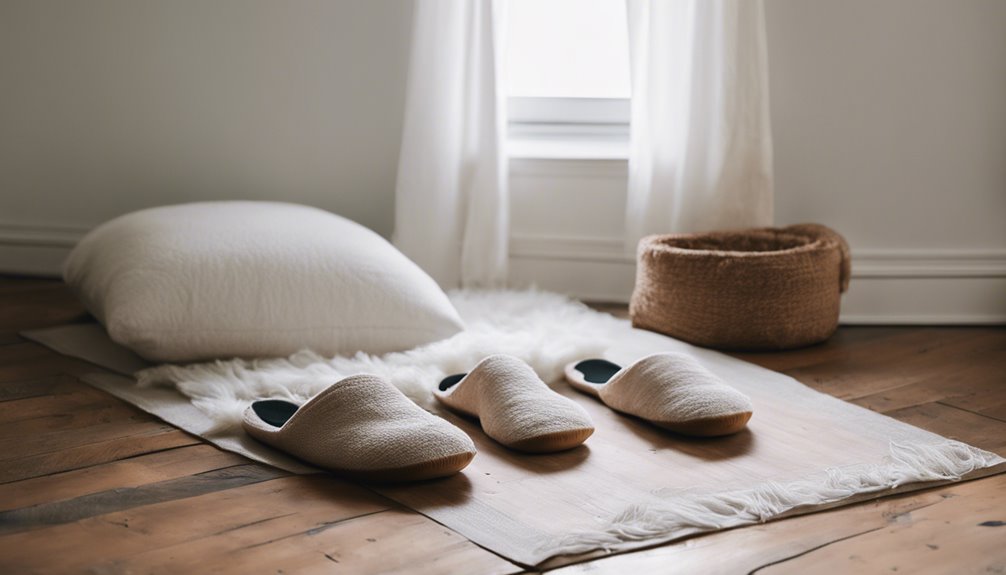
If you're considering shifting to sleeping on the floor, it's important to approach the change gradually to allow your body to adjust. Start by placing a thin mat or blanket on the floor to enhance floor comfort while you acclimate. Spend a few nights lying on the floor for short periods, gradually increasing your time as you feel more comfortable. Pay attention to how your body responds and make adjustments as needed. You might also want to experiment with different sleeping positions to find what feels best. Remember, gradual adjustments are essential; rushing the shift can lead to discomfort. Listen to your body, and before you know it, you'll be enjoying the benefits of floor sleeping without strain.
Alternatives to Floor Sleeping
If you're considering alternatives to floor sleeping, exploring different mattress types can greatly impact your back health. A supportive mattress, combined with proper sleeping positions, can help alleviate discomfort and promote better spinal alignment. Understanding these options allows you to make an informed choice that suits your needs.
Mattress Types Comparison
While sleeping on the floor may offer some benefits for spinal alignment, many people prefer the comfort and support provided by various mattress types. Here's a quick comparison to help you decide:
| Mattress Type | 主な特徴 | 利点 |
|---|---|---|
| Memory Foam | Contours to your body | Pressure relief |
| Innerspring | Coil support | Breathability, bounce |
| Hybrid Mattresses | Combination of materials | Best of both worlds |
Latex benefits include durability and natural resistance to allergens, while adjustable firmness options cater to individual preferences. Each type has unique advantages, enabling you to find the perfect fit for your body and sleeping style. Prioritizing comfort can lead to better sleep quality and overall well-being.
Supportive Sleeping Positions
Although sleeping on the floor might seem appealing for some, there are numerous supportive sleeping positions that can offer better comfort and alignment for your back. One effective option is sleeping on your side with a supportive pillow between your knees, helping to maintain spinal alignment. If you prefer back sleeping, use a supportive pillow under your neck and consider placing a rolled towel under your knees for additional support. Ascertain you have proper blankets to keep your body warm and relaxed, which promotes better sleep quality. Experimenting with these positions can help you find what works best for you, allowing for a restful night while improving overall back health. Your freedom to choose should prioritize your comfort and well-being.
Personal Experiences and Testimonials
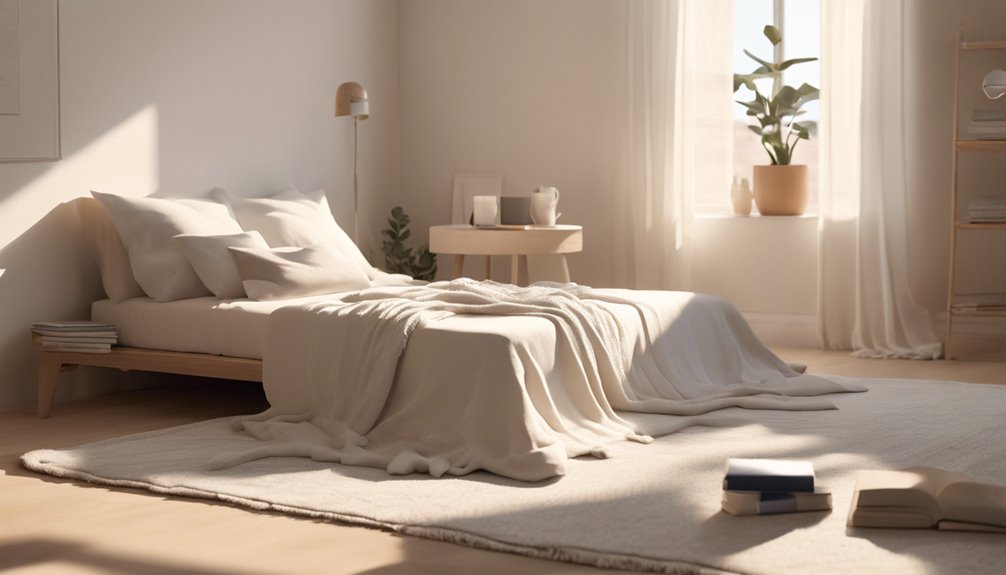
Many individuals have reported varying outcomes from sleeping on the floor, with some claiming it alleviates their back pain, while others find it uncomfortable. Your personal stories and sleep experiences can greatly influence your perspective on this practice. Some users have noted that a firmer surface helps align their spine, leading to reduced discomfort. Conversely, others have struggled with pressure points that exacerbate their issues. It's crucial to reflect on your unique body type and sleeping habits when evaluating these testimonials. If you're contemplating this change, you might want to gradually shift to floor sleeping to gauge how your body reacts. Ultimately, listening to your body and adjusting accordingly can lead to a better understanding of what works best for your back health.
よくある質問
Can Sleeping on the Floor Cause Pressure Sores?
You might wonder if sleeping on the floor can lead to pressure sores. While floor sleeping offers benefits like better spinal alignment and improved posture, it can also increase the risk of pressure sore formation, especially if you're not using adequate cushioning. To prevent pressure sores, consider using a thin mat or blanket. Regularly changing positions while sleeping can also help minimize pressure on specific areas, ensuring a more comfortable experience overall.
How Long Does It Take to Adjust to Floor Sleeping?
Adjusting to floor sleeping can vary from person to person, typically taking anywhere from a few days to a couple of weeks. During this adjustment period, you might notice changes in your sleep quality as your body adapts to the harder surface. Initially, discomfort is common, but many find that with time, their bodies become accustomed, leading to improved support and alignment while sleeping. Patience is key to experiencing the potential benefits of this change.
Is It Better for Side Sleepers or Back Sleepers?
When considering whether sleeping on the floor caters better to side sleepers or back sleepers, you might wonder which position provides the most benefits. Side sleepers often enjoy improved spinal alignment and reduced pressure points, while back sleepers may find comfort in a firmer surface that supports their natural curvature. Ultimately, your choice should reflect your personal preferences and comfort level, as both positions can potentially offer unique advantages depending on your body's needs.
What Type of Mat or Padding Is Recommended?
When considering what type of mat or padding to use, you've got a couple of great options. Memory foam provides excellent support and contours to your body, helping with pressure points. Alternatively, a traditional futon can be a more minimalist choice, offering a firmer surface that some find beneficial for spinal alignment. Both options can enhance your sleeping experience, so it really depends on your personal comfort preferences and needs.
Can Children Benefit From Sleeping on the Floor?
Studies show that 60% of children experience back pain by their teenage years. You might find that floor sleeping benefits kids by promoting better alignment and strengthening their muscles, which can improve children's posture. Sleeping on a firm surface may encourage natural spinal alignment, helping to prevent issues later in life. While it's crucial to reflect on comfort, introducing floor sleeping gradually could be a unique option for enhancing your child's overall well-being.

